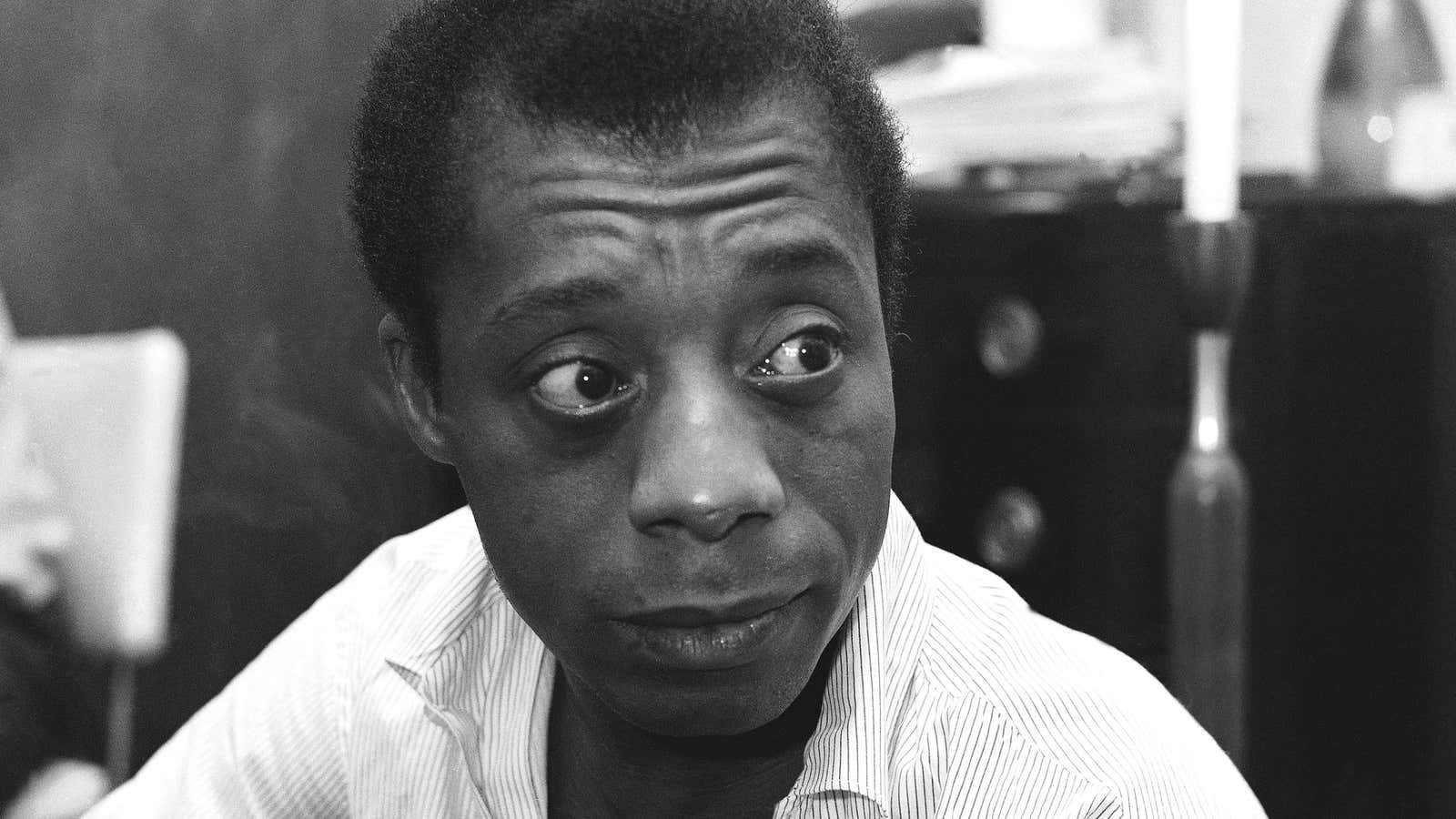Towards the beginning of Raoul Peck’s excellent documentary I Am Not Your Negro, Dick Cavett asks James Baldwin, “Why aren’t black people more optimistic?” Black people, Cavett says in the 1968 interview, have made great strides. They’re on films—they’re even, he notes, on television commercials. Yes, there are still problems, he acknowledges, but shouldn’t these moments of progress be celebrated?
The remainder of the film is an extended, painful, carefully relentless analysis of why no celebration was, or is, in the offing.
Baldwin understood that while events and people may change, racist ideology and violence has remained remarkably consistent over the past 50 years. Black people are still harassed, still policed, still imprisoned, and still shot in the United States, much as they have always been. “White people are astounded by Birmingham. Black people aren’t,” Baldwin said.
If he were alive now, he might say the same thing about Donald Trump’s election.
I Am Not Your Negro is loosely structured around notes Baldwin made for a book project about three of his friends—civil rights activists Medgar Evers, Malcolm X, and Martin Luther King—all of whom were assassinated in the 1960s. Baldwin grieved, in turn, for each man and describes, in similar terms, the blank numbness he felt at the announcement of each death.
The film suggests that half a century later, the pain hasn’t died down. Michael Brown, Tamir Rice, Sandra Bland, Freddie Gray—black people are still dying in the US because certain white people hate still want to kill them. “The history of the Negro in America is the story of America,” Baldwin says. “It is not a pretty story.”
That ugly story, broadly, is racism, and it has two parts. The first is ideological. I Am Not Your Negro quotes extensively from Baldwin’s 1976 book length essay/memoir on American film, The Devil Finds Work. It also reproduces many of the film clips that Baldwin discusses from movies such as Guess Who’s Coming to Dinner?, Uncle Tom’s Cabin, and In the Heat of the Night.
What Baldwin sees when he watches these films is a country that is unable, or unwilling, to acknowledge the humanity of non-white people. John Wayne rides across the prairie shooting Indians, and Baldwin talks with bleak humor about the moment when he realized that, as a black child, he was not the hero of the story. He was the one being gunned down.
When back people on screen do get to be the good guys, their main role, Baldwin observes, is to provide reassurance and deference. In the 1958 escaped convict film The Defiant Ones, Sidney Poitier leaps off a train to join his white buddy, who couldn’t make the leap to safety and escape. Downtown, white viewers were comforted, Baldwin says; uptown minority audiences shouted at the screen, “Get back on the train, you fool!”
When inspiration fails, white people have throughout history turned from ideology to violence. Medger Evers–who was later murdered by a racist white man in front of his house–was inspired to join the civil rights movement after walking past lynching victims in 1930s Mississippi. I Am Not Your Negro includes archival footage of white people protesting, spitting, and shouting as black children attempt to desegregate schools. It juxtaposes those images with footage from Ferguson, Missouri, in 2014, when police in riot gear and tanks confronted black protestors. The main difference between the archival footage and video from today seems to be that the violent white people are better armed now.
“History is not the past. It is the present,” Baldwin says. It’s true that there is change over time. There are arguably more and better roles for black people in Hollywood now than there used to be. Evers’ murderer—acquitted twice by all-white juries in 1964—was retried and convicted in 1994. A black man was elected to the presidency just as Robert Kennedy predicted. Though, as Baldwin notes in the film, given how long black people have lived in America, Barack Obama is at best a belated triumph.
Ultimately, Baldwin sees pessimism as a renunciation of life and of love; as a result, he says, “I can’t be a pessimist because I’m alive. I’m forced to believe that we can survive whatever we must survive.” But he is also realistic. Trump’s America in 2017 isn’t so different from Trump’s America in the 1970s, when he allegedly wouldn’t rent apartments to black people. It’s not so different from America in the 1920s, when Trump’s father was arrested following a Ku Klux Klan parade.
“The future of the Negro in this country is precisely as bright or as dark as the future of the country,” Baldwin said. That could be a statement of hope and optimism, if the American people wanted to make it one. So far, they have not.
